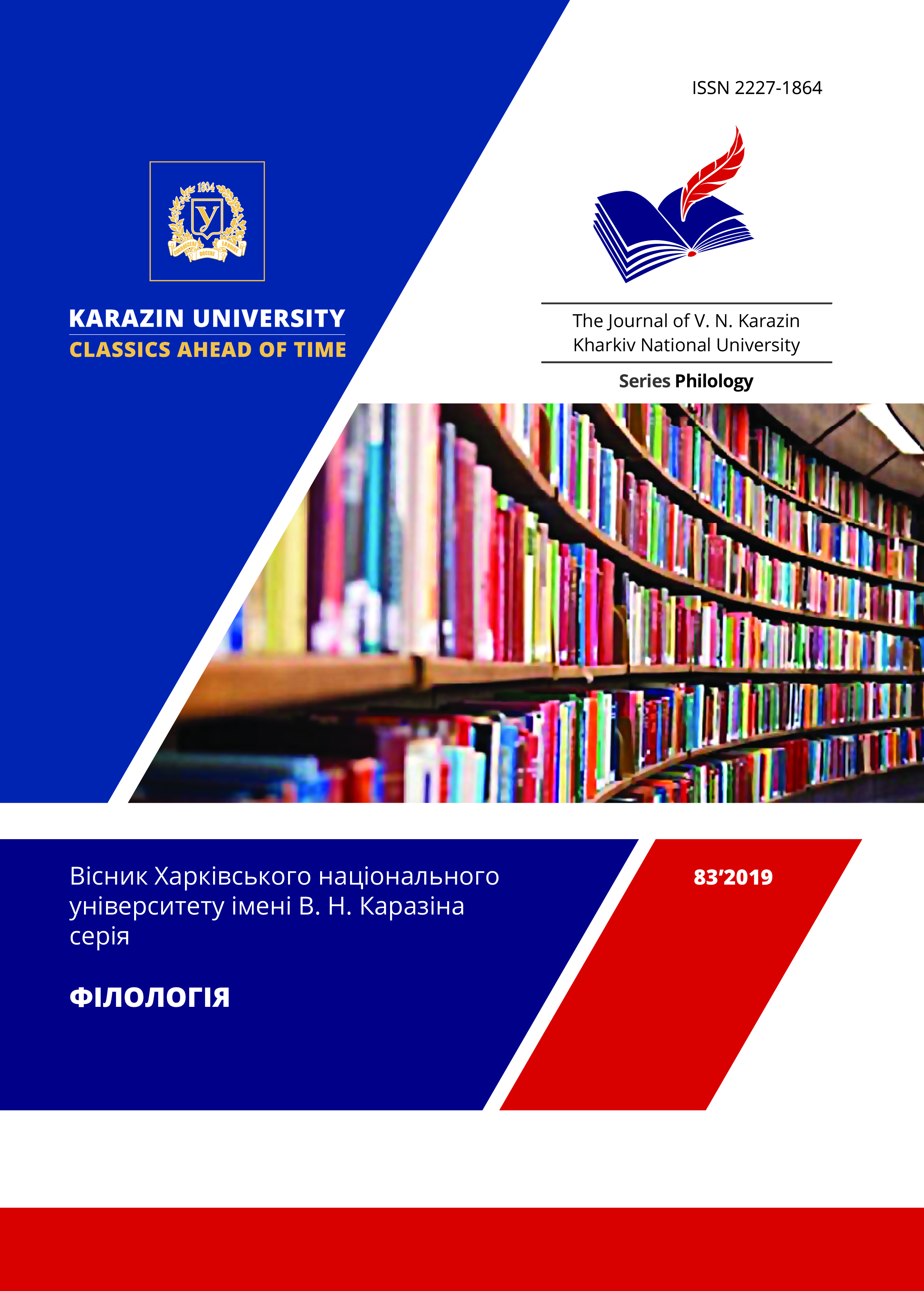Narrative typologies of the English-American Narrative School.
Abstract
The article deals with the becoming and development history of the English and American researchers narrative typologies of ХХ centuries, that remain actual in modern narratology. Under "narrative typologies of ХХ century" scientists understand typology classifications of novels narration, that do possible consideration and classification of its invariant components, narrative structures and their expressions methods. Their principles were formed by the representatives of English-American scientific school (were worked out by H. James and P. Lubbock, and specified by N. Friedman, W. Booth) and got the name "The inductive typology of narration" in science. Dynamic development of narrative theories resulted in the subsequent of internal text communication and selection in her two prospects, that were declared yet by ancient philosophy: diegesis (discursive aspect of narration) and mimesis (his visual aspect, show). So, American scientific Norman Friedman continued P. Lubbocks tradition in consideration of novel narrations forms, gave attention on a "Points of view" concept, offered the carefully worked out system of its varieties. Under other visual angle the problem of Narrative forms and Narrator was examined by the American philologist W. Booth, asserting that any the narrations - it one of rhetoric forms, by means of that an author protects the "interests secret or obvious, predetermining the reaction of reader on the work".
Investigating on the examples of well-known novels the category of presence / absence of teller in history, that is told and his external / internal position in relation to it, representatives of English-American scientific school formulated the detailed typology of novel narrative forms in the aspect of "point of view" and tellers "voice", that became their main achievement in narratology. This typology is fruitfully used in the modern scientific studios of narrative and its forms, spreading from linguistics and literary criticism to psycholinguistics, pragmatic, sociolinguistics, gender researches.
Downloads
References
Il'in, I.P. (2001) Il'in Ilya. Postmodernizm: slovar' terminov [Ilyin I.P. Postmodernism: a dictionary of terms]. Moskau : INION RAN - INTRADA. [in Russian]
Booth W.C. (1961) Wayne C. Booth. «Distance and Point-of-View: An Essay in Classification». Essays in Criticism. Chicago and London : The University of Chicago Press. [in English]
Booth W. C. (1961) Wayne C. Booth. The Rhetoric of Fiction. Chicago and London : The University of Chicago Press. [in English].
Friedman N. (1975). Norman Friedman. Form and meaning in fiction. Athens : The University of Georgia Press. [in English].
Friedman N. (1967). Norman Friedman. Point of view in fiction // The theory of the novel. Ed. by Stevick Ph. N. Y., pp. 108-139. [in English].
James H. (1884). Henry James. The Art of Novel // Published in Longman’s Magazine 4 (September 1884), and reprinted in Partial Portraits (1888). [in English].
Lubbock P. (1957). Percy Lubbock. The craft of fiction. London: Filiquarian Publishing. [in English].




